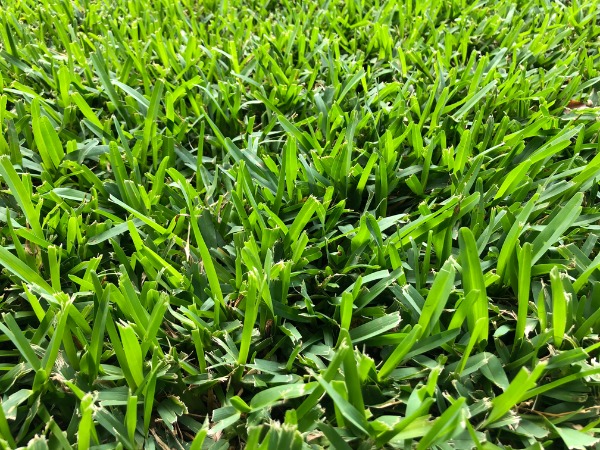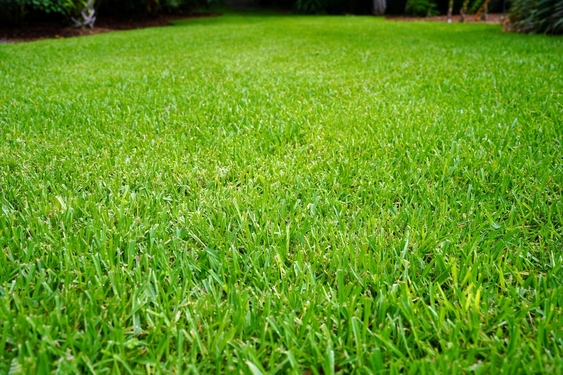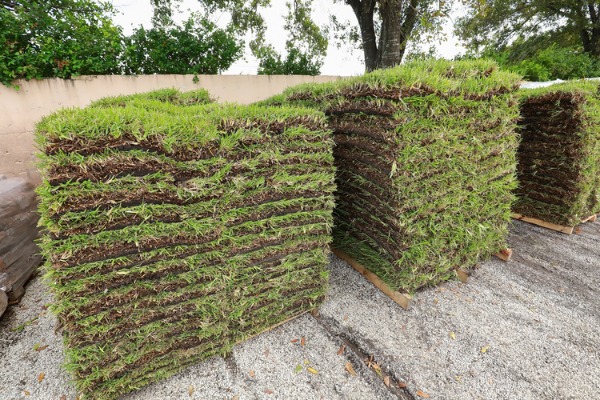Last Updated:
December 18, 2025
St. Augustinegrass is one of the most popular warm-season turf options found across Georgia, valued for its durability, dense texture, and ability to stay green through the hottest stretches of summer. However, keeping St. Augustinegrass healthy requires deliberate seasonal care, especially when dealing with Georgia’s fluctuating and unpredictable weather.
Come learn the essential lawn care practices and seasonal needs of St. Augustinegrass, helping you create a lawn that stays vibrant across Georgia’s diverse climate conditions.

St. Augustinegrass forms a thick, carpet-like turf characterized by broad leaves and a medium-to-dark green color. The grass spreads aggressively through stolons (runners), allowing it to fill bare areas quickly and establish coverage. This growth habit is the reason consistent mowing, edging, and dethatching are such important parts of care.
When properly maintained, the turf is soft underfoot and visually bold, often giving lawns a tropical aesthetic. As temperatures cool, it may lose color and enter dormancy, turning tan until conditions warm again. The stolon growth that makes the grass self-repairing also leads to thatch development, which must be monitored and managed.
Key Characteristics:

One of the biggest advantages of St. Augustinegrass in Georgia is its shade tolerance. While many warm-season grasses decline beneath tree canopies, this turf performs reliably with partial sun. It’s also highly heat-tolerant, retaining density and color through long stretches of Georgia’s summer heat when properly watered.
St. Augustinegrass recovers quickly from minor damage thanks to its spreading stolons, which makes it effective in play areas. It withstands moderate drought but grows noticeably healthier with consistent moisture. Because of its thick canopy, weeds struggle to establish in properly maintained turf, another reason homeowners love it.
Main Benefits:

St. Augustinegrass requires different care strategies as the seasons change. Aligning your maintenance routine with its biological growth cycle allows the turf to recover properly, resist stress, and remain vibrant throughout the year.

Although St. Augustinegrass is well-adapted to Georgia’s climate, homeowners should be prepared for its vulnerabilities. Because it prefers consistent moisture, water restrictions or prolonged drought can cause thinning. This turf is also sensitive to cold; harsh winter snaps may create patchy areas come spring.
Fungal diseases are another concern, especially during humid summers. Gray leaf spot and brown patch often flourish when lawns are over-watered or over-fertilized with nitrogen. Chinch bugs are the primary pest threat, and infestations can cause widespread discoloration if left untreated. St. Augustinegrass is commonly installed as sod, which makes these threats even more of a concern if proper care is not taken.
Potential Drawbacks:

With the right care plan, St. Augustinegrass can thrive in Georgia’s conditions and remain attractive all year long. Proper mowing, irrigation, fertilization, and pest prevention are the pillars of turf health.
If you’re a Georgia homeowner seeking a greener, denser, and more resilient St. Augustinegrass lawn, partnering with Pro Outdoor can make maintenance easier and more effective. From fertilization to mowing and everything in between, we know how to take care of lawns in the Albany, GA, area. Call today for a free estimate on any of our lawn care services.